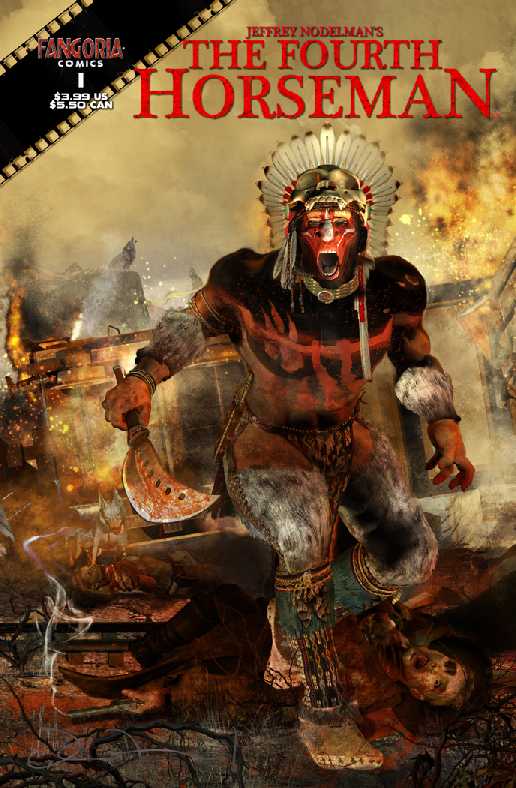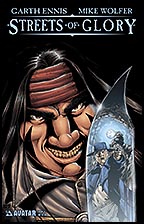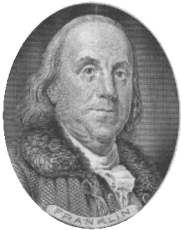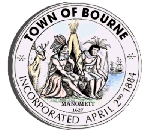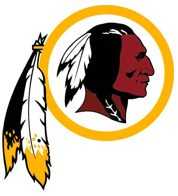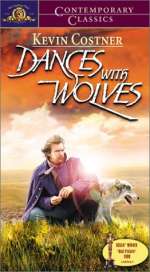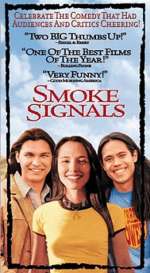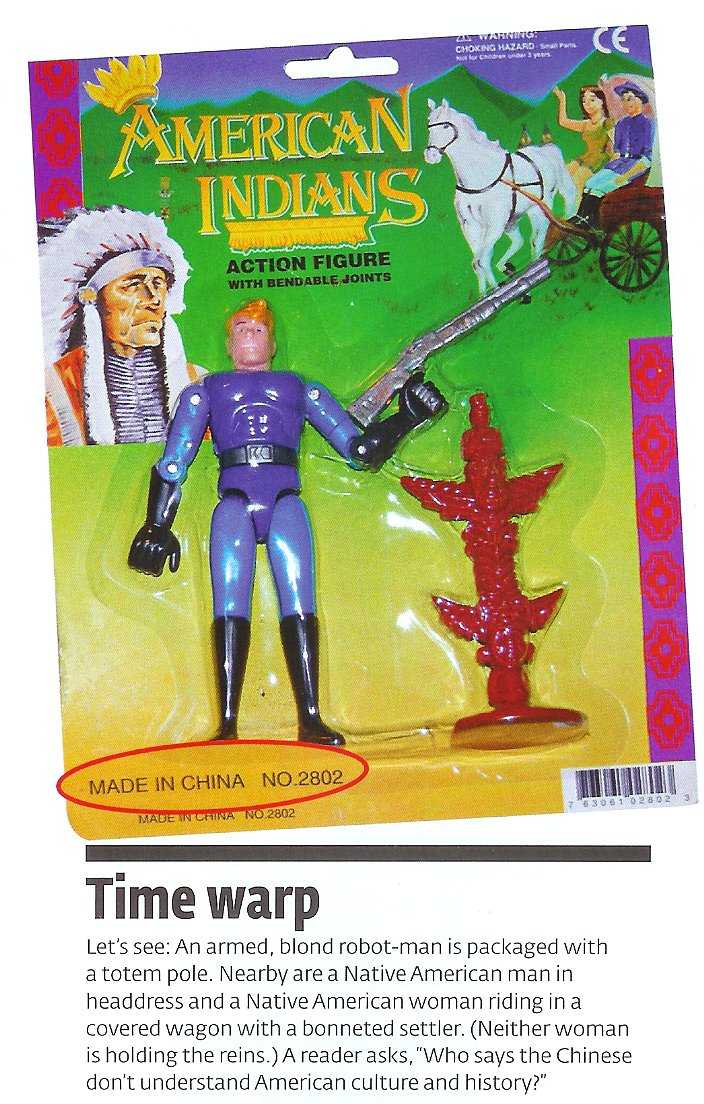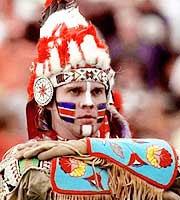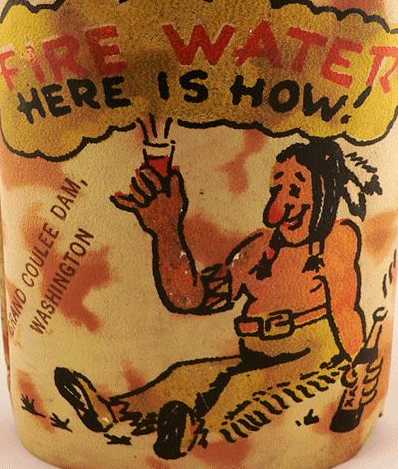Another
review of Reel Injun makes some interesting points:
Reel Injun cuts through clichésBy Craig TakeuchiThe depiction of Native people as the enemy in westerns was so unquestioned that Diamond and other Native children grew up identifying with cowboys. In fact, seeing a Native character being portrayed authentically for the first time had a resounding impact at his brother’s school. “When he was in the residential school, he’d watch these cowboy-and-Indian movies all the time as well. There’s a scene in a film where this Native character comes up over a rise and says this line, and it happened to be in Cree, and a whole bunch of the Cree kids in the school turned to each other and said, ‘Holy shit!’”
What’s interesting is that Hollywood’s initial attempts to portray Natives as heroes bombed at the Depression-era box office. “They [Hollywood] needed to justify what happened in the Wild West,” Diamond theorizes. “They couldn’t really look at their past and feel good about it if they told the real story of what happened in the West, taking over the continent and stuff. So they needed John Wayne to come in and make them all feel good about it.”Comment: The first point--that Diamond grew up identifying with cowboys--isn't that interesting. Several Indians have said the same thing. In fact, I don't think I've ever heard an Indian say he grew up identifying with movie Indians.
But the related point--how impressive it was for Cree kids to see one of their own on the screen--is interesting. Even though Diamond doesn't say more about it, you can imagine its having a profound effect on the kids' self-image. In some cases it could be a life-changing event.
Hollywood's ups and downsThe second point is the really interesting one. I haven't studied the history of Hollywood Indians in depth, but it doesn't seem to have gone in a straight line.
For the first couple of decades, Hollywood undertook a lot of stereotypical but sincere efforts to romanticize and ennoble Indians. Some even had
real Indians in front of or behind the cameras. They portrayed brave warriors and beautiful maidens who fought for their dignity and honor and died tragically.
For the next few decades, Hollywood produced the classic Westerns associated with
John Wayne. No longer were Indians portrayed as noble savages. They were simply
savages: predatory beasts who circled the wagon trains and tried to kill everyone.
From the mid-1950s on Hollywood made a gradual transition to portraying Indians as full-fledged human beings. The stereotypes lessened and the complexities grew. This culminated in the breakthrough trio of
Dances with Wolves,
Pocahontas, and
Smoke Signals--the three Native movies that everyone still talks about.
And in the 2000s I'd argue that Native portrayals have plateaued. We're seeing a lot of good work among independent filmmakers such as
Atanarjuat,
Imprint, and
Four Sheet to the Wind. And a lot of high-minded specials such as
Dreamkeeper,
Into the West, and
We Shall Remain.
But we're also seeing a return to the stereotypes of the past in movies such as
Apocalypto,
Comanche Moon, and
Indiana Jones and the Kingdom of the Crystal Skulls. And a lot of bogus casting choices such as
Johnny Depp,
Taylor Lautner, and
Lynn Collins.
The early yearsWhy the ups and downs? Diamond theorizes that positive Native portrayals fell out of favor and stopped making money. Maybe so, but if this happened, why? What's the explanation behind the explanation?
For starters, talking about whether the movies made money seems superficial at best. Hollywood made positive Native movies for 10 or 20 years, then negative Native movies for 20 or 30 years, then somewhat positive Native movies again. Each kind of movie presumably made money for years before it stopped making money. Therefore, something besides the movies themselves caused the shifts in emphasis.
It could be that audiences just got bored, but I bet there was more to it than that. In the early years of the 20th century, Americans were still lamenting the
"vanishing Indians." (The ones we
caused to "vanish" by killing them.)
Wild West shows continued to be popular throughout this period. Geronimo became a
folk hero. Professional and college teams chose Indians as
mascots.
So what changed? Well, the heyday of classic Westerns corresponded with the rise of the USSR, the Depression, Nazism and World War II, and the Cold War. In other words, America was going through a bad period. Perhaps we felt so insecure that we needed someone to lash out against. Someone we could beat and kill to make us feel good about ourselves.
Killing Commies, Nazis, and Japs wasn't enough, so we gratified ourselves with killing fictional
redskins. One faceless horde of barbaric
savages substituted for another. War heroes and Western heroes, such as those
John Wayne played, became interchangeable examples of American greatness.
Into the modern eraSimilarly, we could chart the last half of the 20th century:
Mid-1950 through 1970s => social activism => better Native movies.1980s => Reagan era => fewer good Native movies.1990s => Clinton era => Dances with Wolves, Pocahontas, and Smoke Signals.2000s => Bush era => Mix of good and bad movies.Even that's probably way too simplistic. We should look for more specific triggers. For instance, the
Reagan era may have coincided with a backlash against
Alcatraz,
Wounded Knee II, and other instances of Native activism.
The Bush era definitely coincided with the expansion of
Indian gaming and the backlash against it. You didn't see it in the decade's movies, but many Native-themed TV shows featured gaming-related plots. And those that didn't often featured business-related corruption, a similar idea.
It's impossible to prove, but I suspect this backlash has had an effect on movies too. In the 1960s and '70s, Indians were oppressed underdogs. In the 2000s, they were
greedy casino owners. That had to affect people's thinking.
Studio execs surely felt the same way as Americans overall. So in the first era, they greenlighted
Little Big Man and
Billy Jack. In the second era, they greenlighted
Pirates of the Caribbean and
The Ruins. Each era's movies would be inconceivable in the other era.
Same with comic books or any other popular medium. In the first era,
Wyatt Wingfoot, the
X-Men and New Mutants, and Alpha Flight. In the second era,
THE FOURTH HORSEMAN,
STREETS OF GLORY, and
SCALPED.
ConclusionI don't know if this analysis is totally right, but it isn't totally wrong. I'd say it shows the complex interplay between political, social, and cultural forces. Between Native lives, Native entertainment, and Native stereotypes.
That's why I laugh when
Russell Bates ignoramuses say movies don't have messages. What happens when people get sick of George W. Bush and his pro-war, pro-business, anti-environment, anti-science mentality? They create, produce, and flock to a movie such as
Avatar. Culture shapes entertainment which in turn shapes culture.
With Obama as president and change in the air, it should be a good decade for Native-themed entertainment. Let's hope so.
For more on the subject, see
The Best Indian Movies.
Below: Progressive era:


Regressive era:
